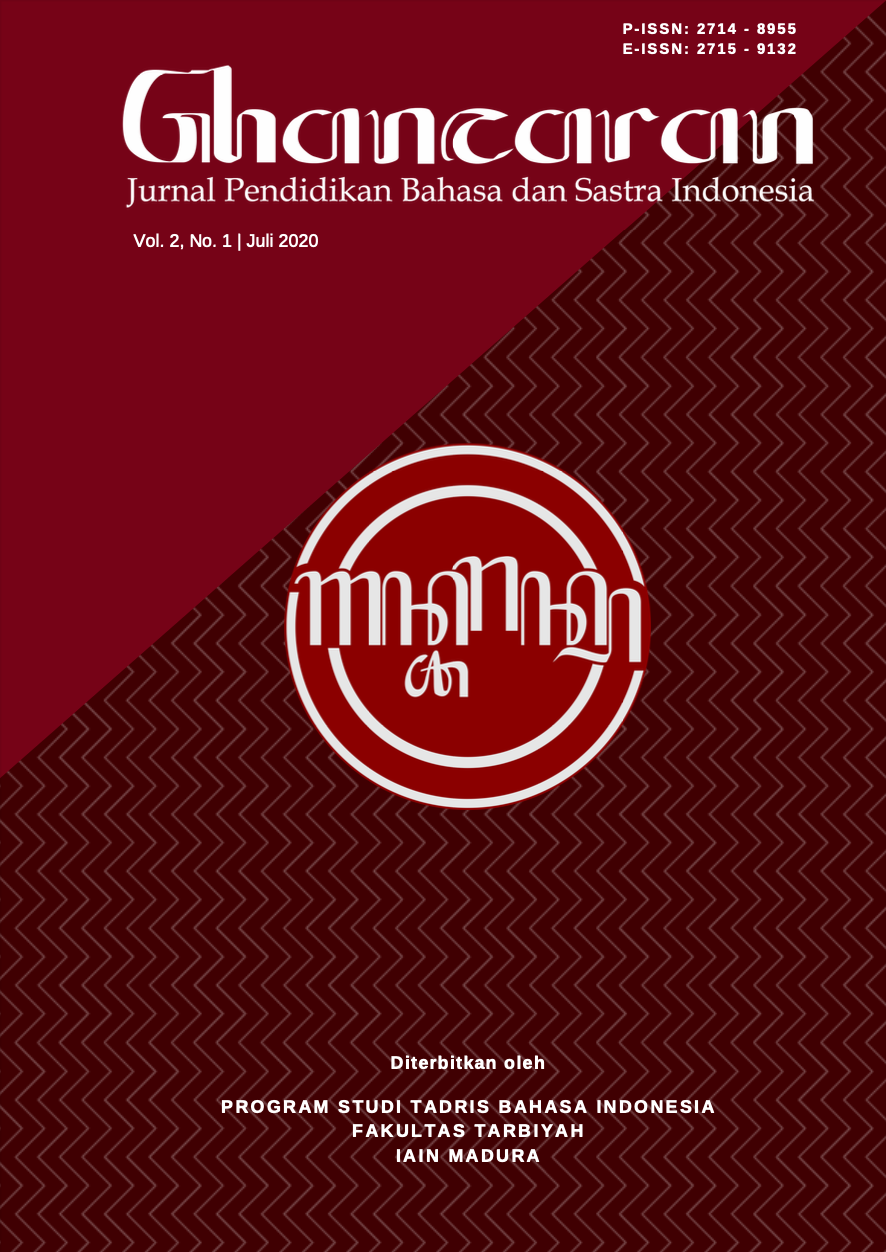CAMPUR KODE BAHASA ALAY DI KALANGAN REMAJA SMP TARUNA SURABAYA TIMUR
 Abstract views: 453
,
Abstract views: 453
,
 PDF downloads: 444
PDF downloads: 444
Abstract
Downloads
References
Aslinda dan Syafyahya, L. (2007). Pengantar Sosiolinguistik. Bandung: Refika Aditama.
Chaer, A., & Agustina, L. (2004). Sosiolinguistik:Perkenalan Awal. Jakarta: Rineka Cipta.
Chaer, A., & Agustina, L. (2010). Pengantar Awal liguistik. Jakarta: Rineka Cipta.
Malyani, R. (2011). Analisis Campur Kode Dalam Novel “Ketika Cinta Bertasbih” Karya Habiburrahman El Shirazy. UIN Jakarta.
Masitoh, S. (2013). CAMPUR KODE BAHASA INDONESIA KE DALAM BAHASA JAWA PADA SIARAN RADIO JAMPI SAYAH DI RADIO SKB POP FM. Jurnal Pendidikan, Bahasa, Sastra, Dan Budaya Jawa Universitas Muhammadiyah Purworejo, 03(01), 28–33.
Nababan, P. W. . (1991). Sosiolinguistik Suatu Pengantar. Jakarta: Gramedia Pustaka Utama.
Ningrat, K. (2012). Pengaruh Bahasa Alay. Retrieved January 27, 2019, from http.//siimute.blogspot.com/2012/pengaruh-bahasa-alay-terhadap.html.
Moleong, Lexy J. 2013. Metode Penelitian Kualitatif. Edisi Revisi. Bandung : PT. Remaja Rosdakary
Sukoyo, J. (2010). ALIH KODE DAN CAMPUR KODE PADA TUTURAN PENYIAR ACARA CAMPURSARI RADIO PESONA FM. Lingua, 6(2–8).
Ghancaran: Jurnal Pendidikan Bahasa dan Sastra Indonesia uses an Open Access Policy under the Creative Commons Attribution-ShareAlike 4.0 International License. Authors publishing in this journal agree to the following terms:
- Ghancaran Journal holds the copyright and grants the journal rights for first publication with the work simultaneously licensed under a

The work is distributed under Creative Commons Attribution-ShareAlike 4.0 International License which allows others to share, copy, and redistribute the material in any media or format and adapt, remix, change, and develop the material even for commercial purposes, as long as it is stated credit and license derivative works under similar terms. - Authors may make additional contractual arrangements for non-exclusive distribution of the journal's published work version.
- Authors are permitted to post their work online (e.g., in institutional repositories or on their websites) before and during submission, as doing so may lead to productive exchange.



















